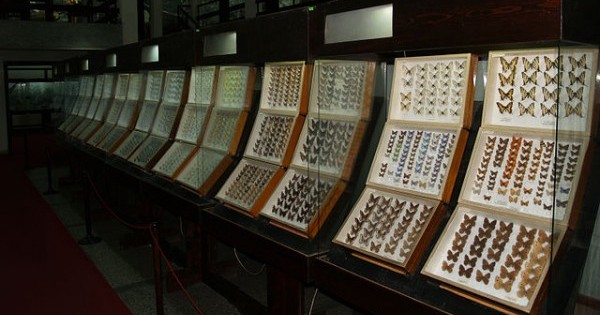When to Say No
Thoughtless collecting of animal specimens can hasten the decline of species

Lionel Walter Rothschild, 2nd Baron Rothschild of Tring (1868–1937), amassed the largest collection of animals—both live and stuffed—ever known. His assemblages included 280,000 bird skins, which he sold to the American Museum of Natural History in New York, and 2.25 million moths and butterflies, which he bequeathed to the Natural History Museum in London upon his death. In 2003, I visited the Rothschild Lepidoptera collection, following the curator to a vast room filled with wooden cabinets deep in the bowels of the museum. I gazed in awe as he opened drawer after drawer of dead moths and butterflies, still shimmering in shades of green, orange, and purple—and all of them out of view of the public.
I had assumed that Rothschild’s collecting mania was a relic of another age. Then I read a recent commentary in the journal Science, entitled “Avoiding (Re)extinction,” and discovered that, despite “the rise of a robust societal ethic of conservation,” as the authors write, “there is still a strong and widespread impulse to procure specimens of rare or rediscovered species for scientific purposes.”
The authors of the perspective (Ben A. Minteer of Arizona State University, Robert Puschendorf of Plymouth University in England, and their colleagues) describe the practice of collecting “voucher specimens”—whole animals or parts of them, usually dead, preserved in an accessible collection, and used as evidence of a species’ existence. Not only can the practice, common among field biologists, increase the risk of extinction for small and isolated populations, it is also unnecessary. As the authors point out, researchers can use other methods of nonlethal documentation, such as high-resolution photography and audio recordings—both of which can be conducted with the aid of a smartphone—or skin swabbing for DNA analysis.
Minteer and his colleagues describe several cases in which collection has led to the decline of an animal species. Mexico’s elf owl (Micrathene whitneyi soccorroensis), the smallest owl in the world, is an example. Collectors scooped up this subspecies every time they visited its home on Socorro Island, south of the Baja California Peninsula, and it was last recorded alive in 1932.
“It’s still very much a standard practice to collect a voucher specimen from the field. In fact, it’s deeply engrained in the methodological culture of taxonomy, field biology, and other disciplines,” Minteer wrote to me in an email. “Our argument, though, is that in certain cases … scientists should consider alternatives that would avoid magnifying any extinction risk to the species.”
He also reported being “really disappointed” by the response to the group’s proposal on science blogs and social media. “Unfortunately, many of our critics continue to ignore the important qualifications in our argument (i.e., we are talking about the case of small and vulnerable populations absent a reliable estimate of population size). They insist that we are naively arguing for a halt to all forms of specimen collection.” In fact, he says, “all we are doing is asking scientists to reflect before they collect, to consider alternatives in cases where taking a voucher specimen may elevate the extinction risk to the species.”
Similar advice, as it turns out, was offered to Baron Rothschild long ago. In an 1891 letter, Cambridge zoology professor Alfred Newton argued that the collectors that Rothschild employed “answer admirably the purpose of stocking a Museum; but they unstock the world—and that is a terrible consideration.” As for Rothschild’s huge Lepidoptera stockpile, it remains largely inaccessible to the public. Users can search the museum’s online database for specimens, according to press officer Sarah O’Donnell. But the curator of Lepidoptera, Geoff Martin, confirmed, “There are no butterflies from the [Rothschild] collection on show to the public, unfortunately.”

